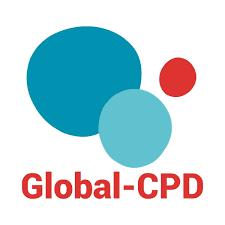Global-CPD LMS
provides professional development opportunities for teachers and administrators working in English-medium schools and universities. Through a structured process of needs analysis, the platform supports users in setting short-, medium-, and long-term goals to enhance educational quality. Our specialized training programs are designed with ongoing follow-up and support, ensuring practical, sustainable growth in teaching and leadership practices.

Free CPD Resources Hub
Access our open hub of downloadable resources, tools, and strategies to elevate your teaching, no login or payment required.
Core Teacher Development
Join structured, self-paced courses focused on pedagogy, classroom management, and student engagement, all free for educators.
School Leadership Essentials
Empower yourself with practical leadership skills in school management, mentoring, and data-driven decision-making, open-access for admin teams.
Expert-Level CPD Courses
Unlock specialized training with certificate-backed programs in innovation, AI, curriculum design, and executive leadership.
Trusted by 4500+ education professionals.
Since 2006, thousands of teachers in more than ten countries across the world have been trained by Global-CPD. Participants consistently give positive feedback about the practical nature of what they learn with us. Most importantly, they come back for more training in the following year.
FAQ
Formative assessment is ongoing and guides instruction; summative assessment evaluates learning at the end. Both are crucial, but formative tools like quizzes, polls, and reflections improve real-time learning outcomes.
Blended: mix of online and face-to-face activities for all students.
Hybrid: some students are online while others are in person, often in real-time. The difference affects design and classroom management.
Yes, foundational skills matter. But AI can supplement practice by providing models, instant corrections, and more engaging formats for repetition.
Use routines like “Claim-Evidence-Reasoning” or visible thinking prompts. Avoid yes/no questions, ask learners to justify or compare ideas regularly.
Start with the end goal (learning outcomes), then design assessments and finally activities. It keeps instruction focused, relevant, and aligned with standards.
Scaffolding is temporary support as learners master new content (e.g., graphic organizers, guided steps), while differentiation is tailoring instruction to meet diverse needs over time.
Try tools like Quizizz, Formative, or Edpuzzle. They provide instant feedback and analytics, helping you adjust instruction quickly.
Microcredentials and digital badges can increase motivation, especially for adult learners. They add visibility and purpose to short-term learning goals when designed meaningfully.
Use audio comments, recorded screencasts, or AI-assisted tools like Kaizena or Floop. These speed up the process and often feel more personal to students.
Yes, when applied thoughtfully. Short videos or readings assigned before class free up in-class time for discussion, practice, and feedback, especially useful in STEM and language learning.



